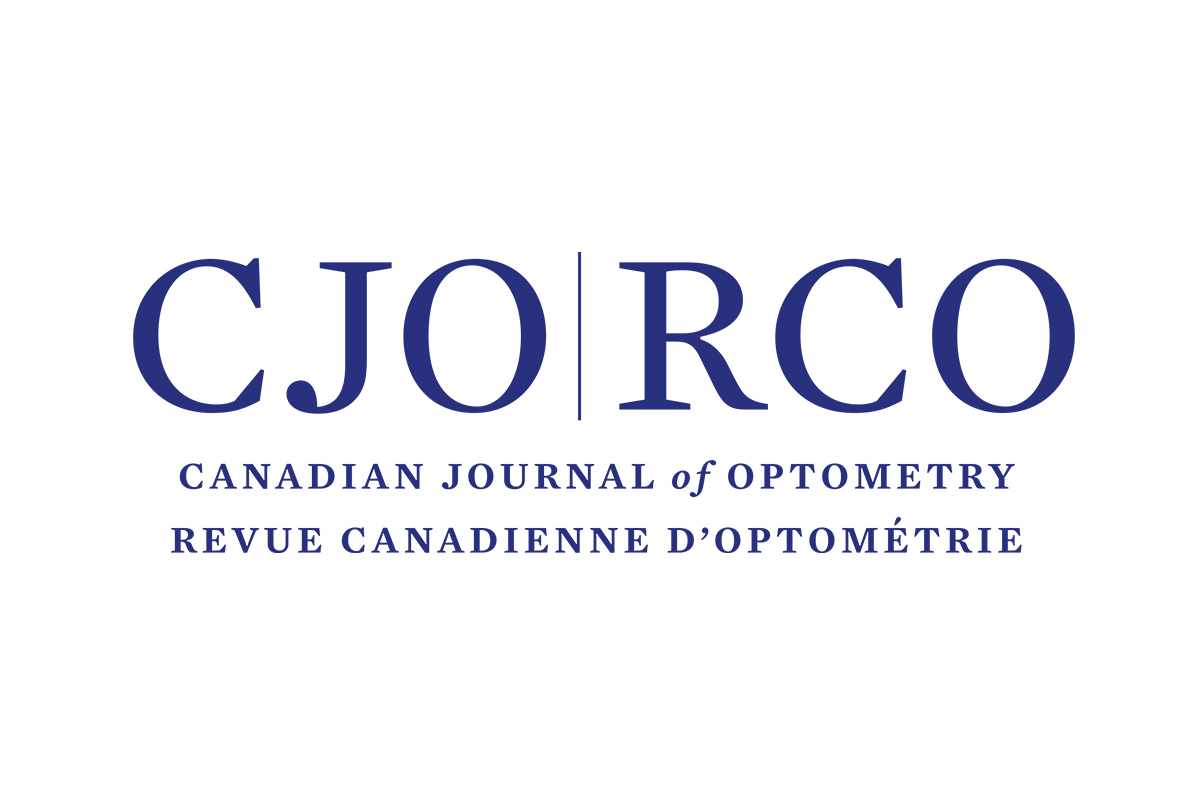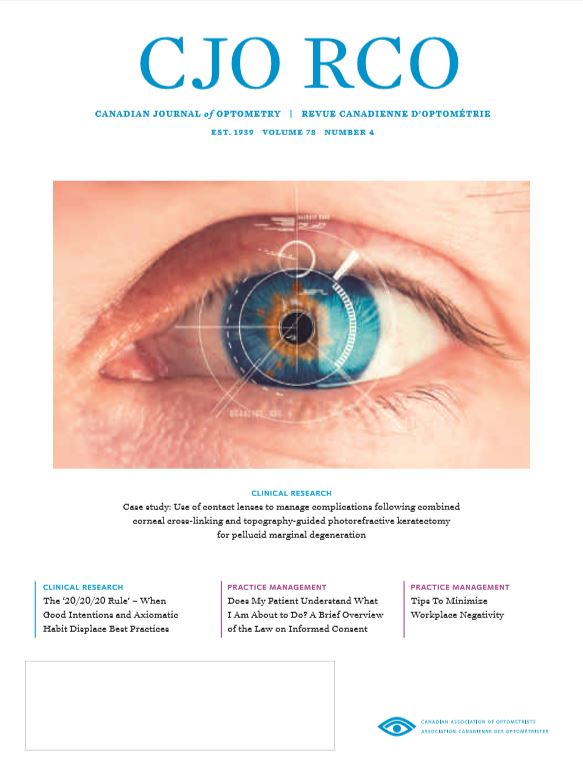Case study: Use of contact lenses to manage complications following combined corneal cross-linking and topography-guided photorefractive keratectomy for pellucid marginal degeneration
DOI :
https://doi.org/10.15353/cjo.78.449Mots-clés :
topography-guided photorefractive keratectomy, corneal collagen cross-linking, Pellucid Marginal Degeneration, stromal haze, dry eyeRésumé
This case report describes two significant long-term complications experienced by a patient following treatment for pellucid marginal degeneration (PMD). Two years after undergoing a combination of topography-guided photorefractive keratectomy (T-PRK) and corneal collagen cross-linking (CXL) procedures, the patient continued to experience glare and dryness associated with persistent stromal haze and dry eye. These procedures resulted in dissatisfaction with the final outcome, which led the patient to seek contact lens correction. Management of the symptomatic ocular sequelae with specialty soft toric contact lenses designed for irregular corneas supported her visual rehabilitation.
Publié-e
Comment citer
Numéro
Rubrique
Licence
© D Yeung, Luigina Sorbara 2016

Cette œuvre est sous licence Creative Commons Attribution - Pas d'Utilisation Commerciale - Pas de Modification 4.0 International.


